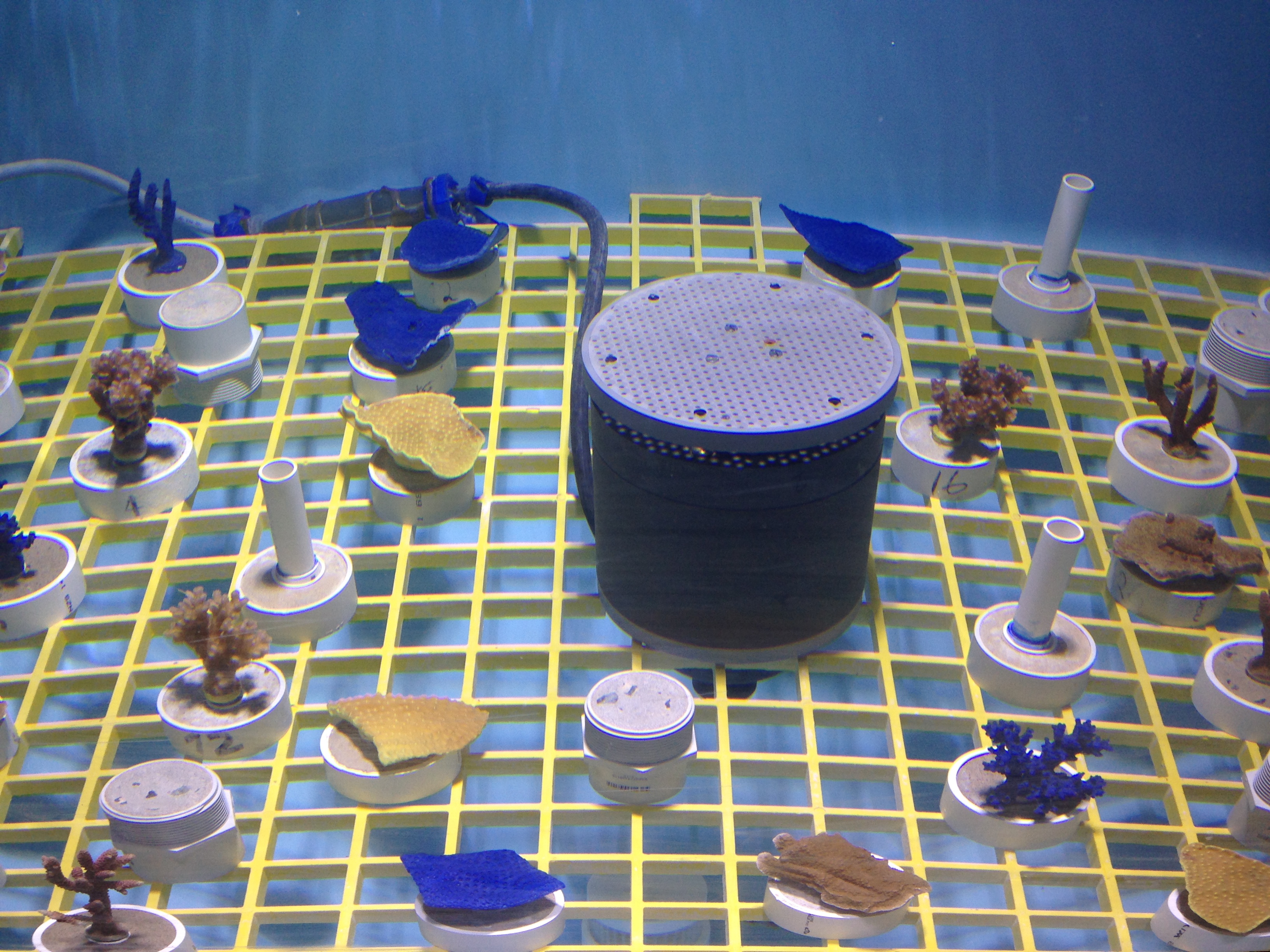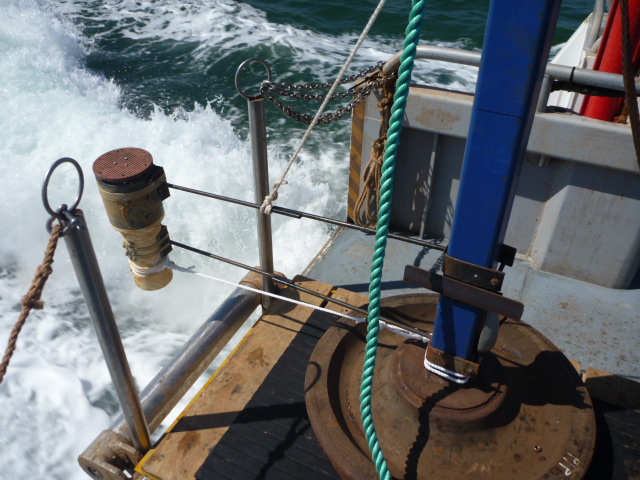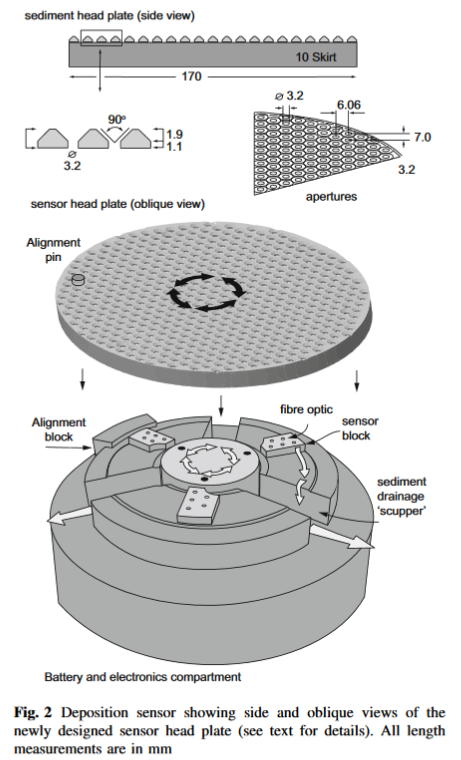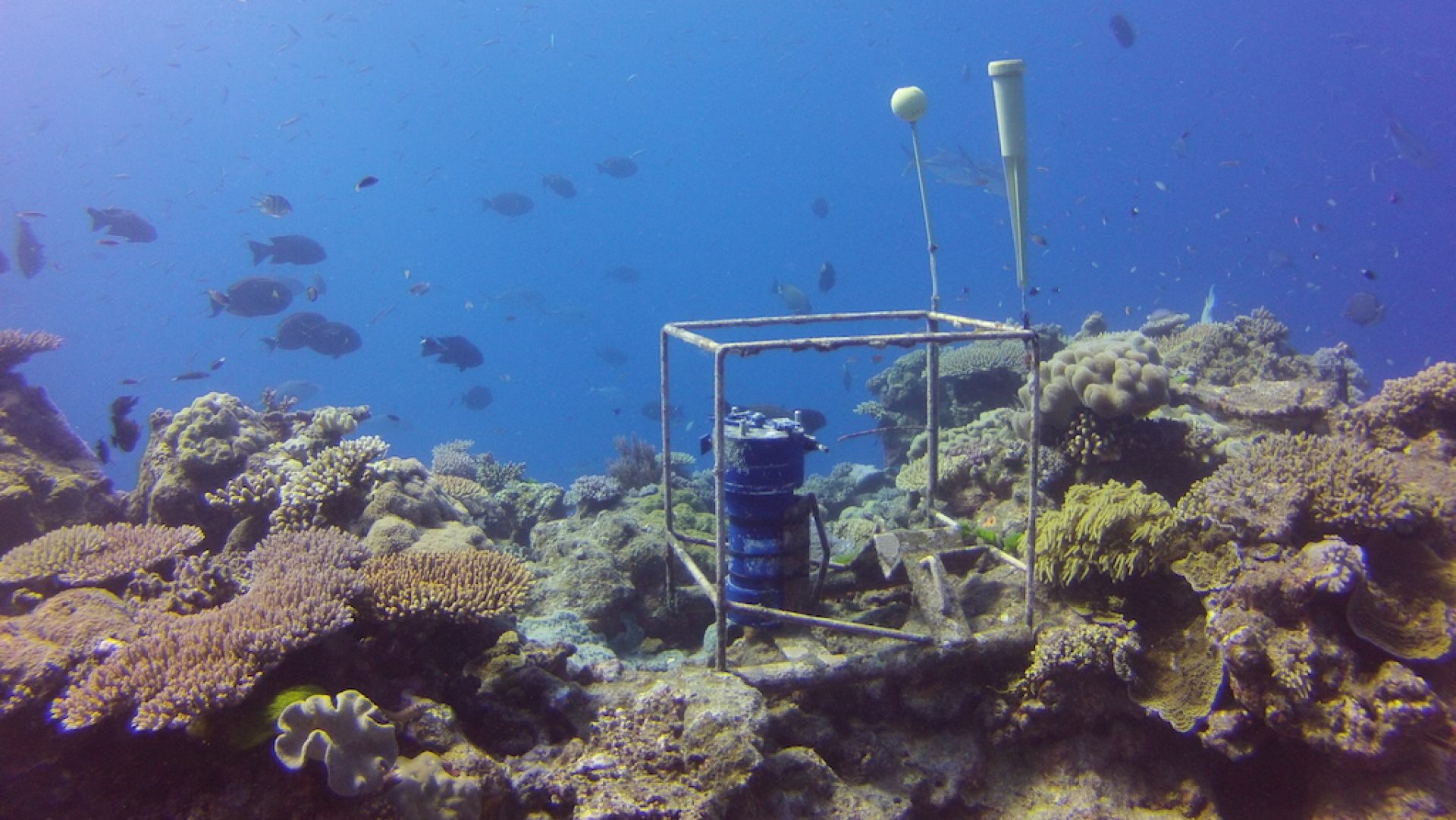Deposition Plate Instrument
The Marine Deposition Sensor uses high frequency sampling in combination with a designed deposition plate that mimics a coral surface to provide accurate and short period deposition rate data. Comparing short period deposition rate data with data measurements of deposition driving factors, such as turbidity, wave energy and current, highlights the power of this instrument in enabling researchers to better understand deposition regimes.

Deposition sensor deployed in laboratory experiments alongside traditional sediment traps and sedpods (image source: WAMSI)

Instrument ready for deployment

The instrument has three separate sensor blocks arranged in a triangular pattern with each block embedded with 5 bundles of fibre optics providing good spatial distribution over the deposition surface. The deposition plate is a 170 x 3mm copper plate perforated with hundreds of equally distributed, countersunk apertures, that are of a size and shape that mimics the calices of a coral. The sensors take a measurement every 10 minutes and the deposition plate rotates every two hours to clean the sensors and re-zero the deposition readings.
For more information on the deposition plate instrument see the published paper Whinney, J., Jones, R., Duckworth, A. et al. Coral Reefs (2017) 36: 521. doi:10.1007/s00338-016-1536-7 and WAMSI article Groundbreaking research to build instruments to measure net sediment deposition
